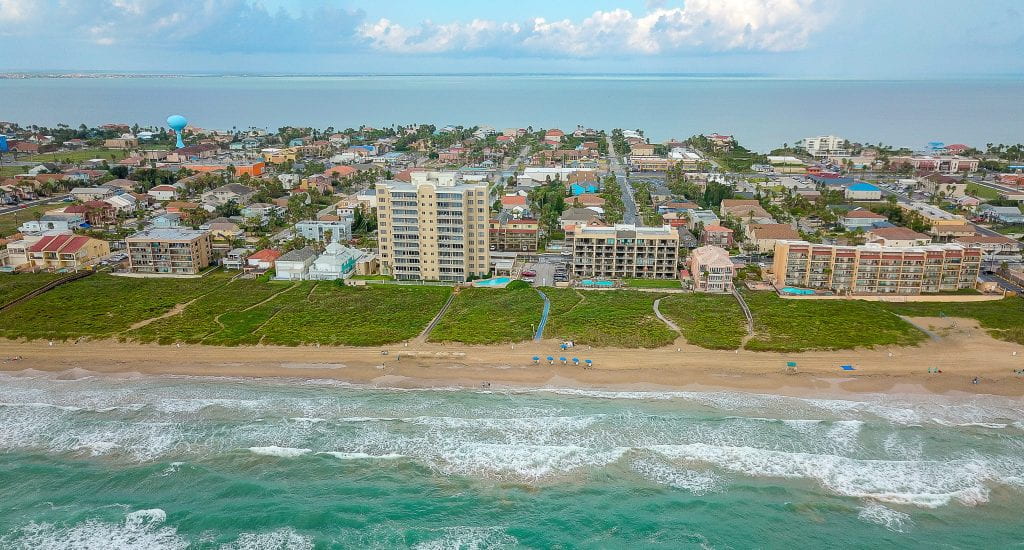With 38 public universities and 35 private colleges and universities in the state and many more across the country (and the world) interested in Texas, there’s a great deal of academic scholarship focused on water in the Lone Star State. In this column, I provide brief summaries to several recent academic publications on water in Texas.

Let’s start thinking about water!
Fault reactivation in response to saltwater disposal and hydrocarbon production for the Venus, TX, Mw 4.0 earthquake sequence
We’ve all (right?) heard of fluid disposal from oil and gas development and production causing small earthquakes in different parts of the state. Haddad and Eichhubl look at how oil and gas production, in combination with disposal, can induce shakin’ and bakin’ (I was lamely attempting to be clever here, but Appendix 3 discusses thermal effects, although they are in the chilling, not baking, direction). Through a finite-element poroelastic numerical model, they investigated conditions near Venus, Texas (up in Johnson County in the land of the Barnett Shale) to see if production could also play a role. Using their model, they were able to accurately hindcast fault activations in the Venus area, demonstrating that including production would improve fault activation predictions. Interestingly, including production from the Barnett Shale reduced the potential for fault reactivation as compared to injection-only scenarios (suggesting a release of pressure on one part of the fault while increasing pressure on another).
Format wise, the authors included seven short appendices. I don’t know if the appendices were original to the submitted manuscript, but they read as responses to reviewer comments, an interesting way of not allowing Reviewer 2 to mess up your flow!
Citation
Haddad, M., and Eichhubl, P., 2022, Fault reactivation in response to saltwater disposal and hydrocarbon production for the Venus, TX, M-w 4.0 earthquake sequence: Rock Mechanics and Rock Engineering, https://doi.org/10.1007/s00603-022-03083-4.
Metabarcoding reveals high genetic diversity of harmful algae in the coastal waters of Texas, Gulf of Mexico

South Padre Island. Credit: David, stock.adobe.com
Of the more than 70,000 species of algae, only 153 are considered harmful. Of these, more than half have been found in the United States, and more than half of those are found in the Gulf of Mexico. To investigate the occurrence of harmful algae along the Texas Gulf Coast and test testing methods, Gaonkar and Campbell sampled the coast after Hurricane Harvey in September and October of 2017. In all, they sampled 36 sites “along the Texas coast” (Oddly, the authors put their sample location map—what I would consider critical information—in their supplemental materials; because my institution has access to the paper but not the supplemental materials, I was not able to see the map. And while I love y’all, I wasn’t willing to pay $25 to see the location of their sampling locations!).
The authors identified 36 harmful algal species from their sampling, about half of the algal nasties known to exist in the gulf. They note that harmful algal blooms are occurring more often worldwide, perhaps requiring more monitoring. They also noted that there was no single marker to test for them, so different tests would be needed.
Citation
Gaonkar, C.C., and Campbell, L., 2023, Metabarcoding reveals high genetic diversity of harmful algae in the coastal waters of Texas, Gulf of Mexico: Harmful Algae 121, doi:10.1016/j.hal.2022.102368.
Characterizing style of participation among Texas inshore recreational fishing guides
Managing fisheries includes knowing who the folks are that are using them. In this case, it’s the professional guides that take clients out for a day on the water in pursuit of piscine pleasure. About 30% of licensed Texas saltwater anglers (200,000 to 250,000) use professional guides each year in Texas, and these guides can help promote resource stewardship and sustainable behavior.
Accordingly, Smith and co-authors studied how inshore recreational fishing guides (those that fish between the barrier islands and the inland shore) differ in their approaches to their craft. The authors interviewed 18 guides and asked them about bait type, tackle type, fishing method, casting tactic, water depth, and fish species. Based on these interviews and analysis, they grouped the guides into four groups: bait guides, all-purpose guides, lure guides, and sightcasting guides. If you’re looking for fishing tips, there actually are some in here. For example, natural bait was identified as the most effective, and if you use lures, you better know what the hell you’re doing. Accordingly, there’s a bit of a pecking order in the business with some guides (presumably lure guides) referring to live baiters as “croaker-soakers.” Quotes in the article from the guides are quite enjoyable for capturing the slang, cadence, and personality of some of the guides.

Style of participation typology and attributes importance. BT = Bait Type, TT = Tackle Type, FM = Fishing Method, CT = Casting Tactic, FS = Fish Species, and WD = Water Depth
Citation
Smith, W.E., Kyle, G.T., Sutton, S.G., and Dunlap, R., 2023, Characterizing style of participation among Texas inshore recreational fishing guides: Human Dimensions of Wildlife, v 28, n 1, p. 8-35. doi:10.1080/10871209.2021.2023711
Join Our Mailing List
Subscribe to Texas+Water and stay updated on the spectrum of Texas water issues including science, policy, and law.

